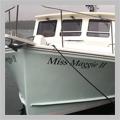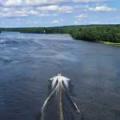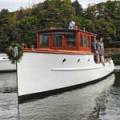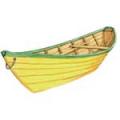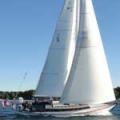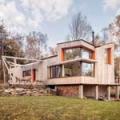A Home-Built Canoe Sows Seeds of Adventures
All photos courtesy Evan Waters
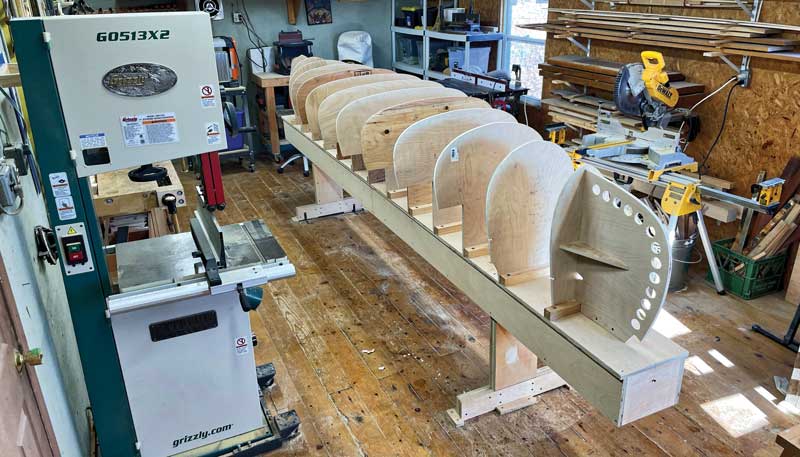 The first order of business was to cut and errect the station mold assembly.
The first order of business was to cut and errect the station mold assembly.
Driving to my cousin’s wedding in 2022, I turned to my wife, Kristen, and said, “I think I’m ready to build the canoe.”
I grew up canoeing on Maine’s rivers and lakes, and a two-day paddle with a friend from Fort Western in Augusta to Merrymeeting Bay in Bowdoinham proved particularly meaningful. It was 2004 and we’d just graduated from college. Having spent our childhoods looking out at the Kennebec River, we were both amazed by newly visible details we passed: stands of wild rice, tiny islets, and the remains of infrastructure from the heydays of ice harvesting.
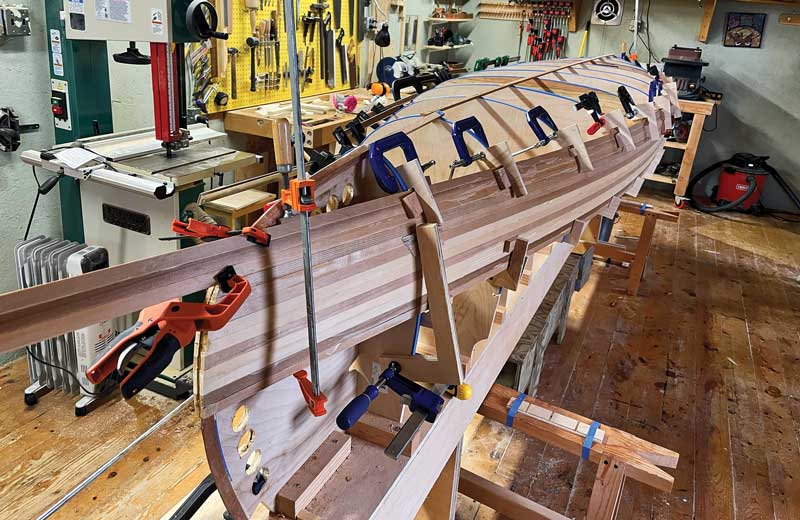 Clamps were used to hold the cedar strips in place while the glue set.
Clamps were used to hold the cedar strips in place while the glue set.
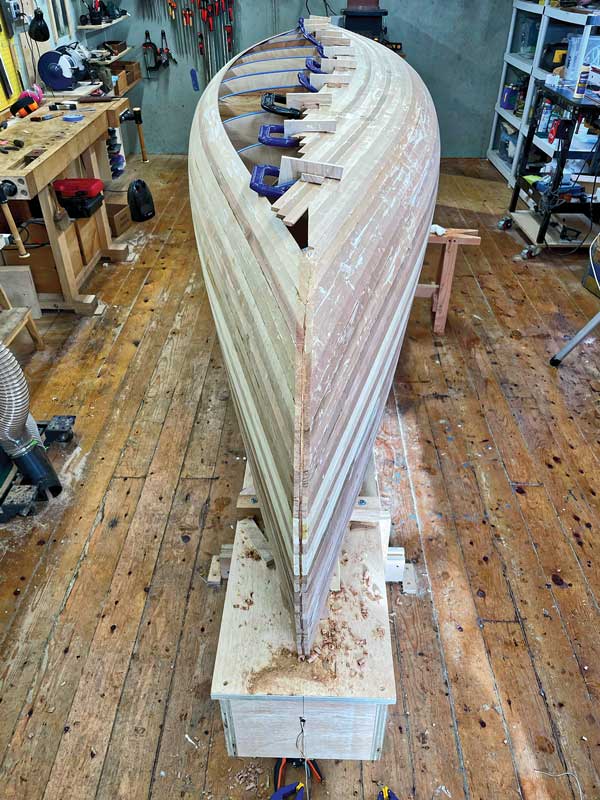 With the bottom nearly fully planked, the author was just a third of the way to launch day.
With the bottom nearly fully planked, the author was just a third of the way to launch day.
The idea of building a canoe had taken root, actually, a few years earlier when my dad and I visited a family friend and marveled at the canvas canoe he was building. After college I took up woodworking as a hobby, fitting a workbench into apartments in New York, San Francisco, and our first home in Denver. After returning to Rockport, Maine, in 2021 with our two young children, I finally felt I had capacity to take on this project. Kristen agreed, and it was a go!
I chose to build a cedar-strip rather than canvas canoe, despite the latter’s history in Maine. To my untrained eye, the process would be simpler: Rather than building an entire form to wrap the hull around, I would simply cut a series of cross-sectional stations. I also liked the captivating patterns the strips made on the hull. So I purchased a copy of Canoecraft from Bear Mountain Boats, in Mississauga, Ontario, and bought plans for their 15-foot Prospector Ranger. I debated milling strips myself but decided on expedience, and procured pre-milled strips from Newfound Woodworks in Bristol, New Hampshire. Construction began in August, 2022, with the assembly of the strongback, a 15-foot long, 1-foot wide, bench on which I’d build the canoe.
Each stage presented a unique set of challenges. I began by transferring the curves of the stations from the plans to plywood sheets, sandwiching a layer of charcoal paper and carefully tracing with the aid of a flexible batten. These were cut on a bandsaw and carefully smoothed with a sander before being set up at 1-foot intervals and aligned with a taut piece of string.
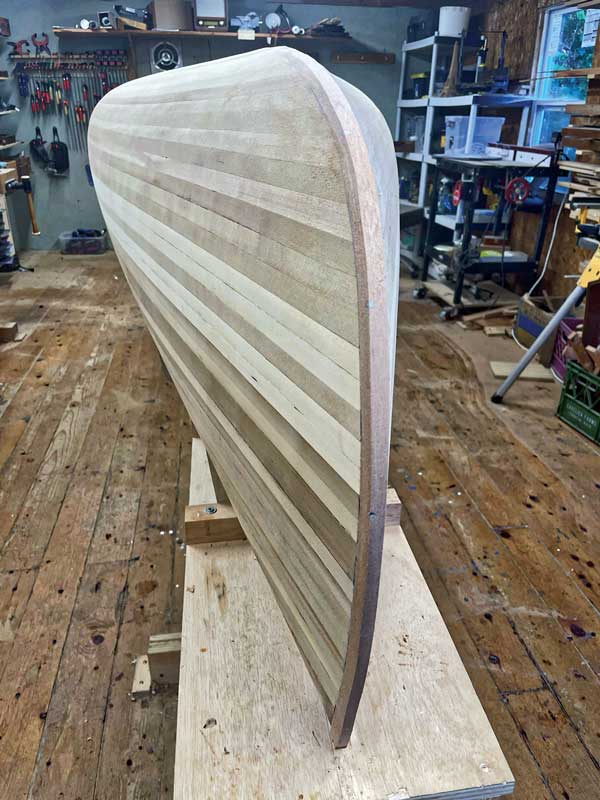 The stem and bow are made from laminated and steamed strips of mahogany.
The stem and bow are made from laminated and steamed strips of mahogany.
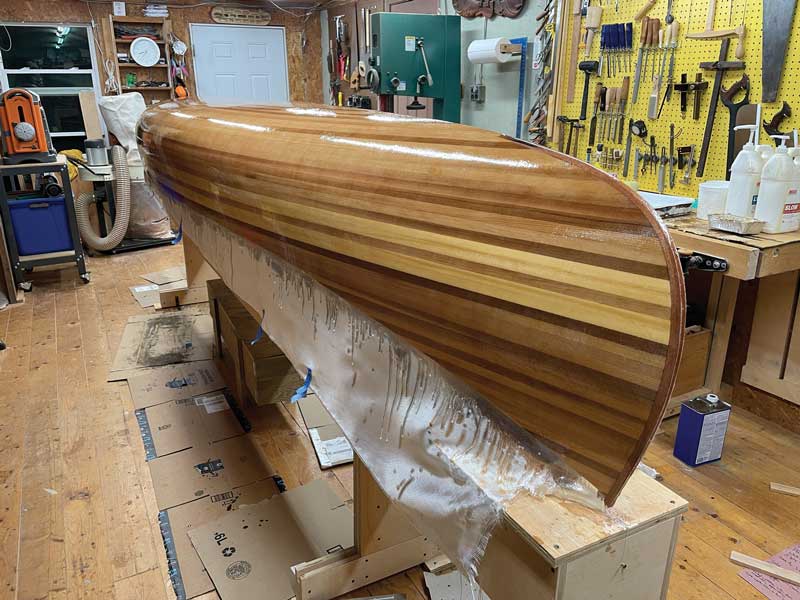 Once the hull was fully planked, a layer of fiberglass and epoxy was applied to create a water-tight outer layer.
Once the hull was fully planked, a layer of fiberglass and epoxy was applied to create a water-tight outer layer.
Before installing the strips, I had to build a steam box and then steam and laminate mahogany strips to create the stems at the bow and the stern. These were carefully shaped with a spokeshave (a woodworking tool used for curves) so that the cedar strips would align perfectly once they were bent around the stations.
Staples can be used to secure strips if you want to move quickly while gluing up, but I eschewed this method to avoid the resulting holes. Instead I glued three strips at a time, holding them tight with a multitude of clamps, L-shaped plywood jigs and wedges. Working on the occasional weekday night and weekend afternoon, I had finished the hull by the summer of 2023. To my dismay, Canoecraft indicated I was now “one third of the way through the project,” and that it was time to “sit back in your ‘moaning’ chair, congratulate yourself and dream about someday paddling this craft down a mist-shrouded lake.” I moaned indeed after reading this, but carried on.
Many friends and family helped along the way. My parents aided in installing the first set of strips, and both Kristen and my aunt lent an essential pair of hands when we steam-bent the stems. Our two young children were keenly interested in removing shavings from the shop as well as any other supplies or scrap they could reach. When the boat was ready for fiberglassing, Kristen and I carefully draped the cloth over the hull. She then kept the kids at bay for the 12 hours it took to apply successive coats of epoxy. We repeated this all again a few weeks later for the inside of the hull. And, notably, my mother worked tirelessly to weave cane for the seats during the final stages of the build.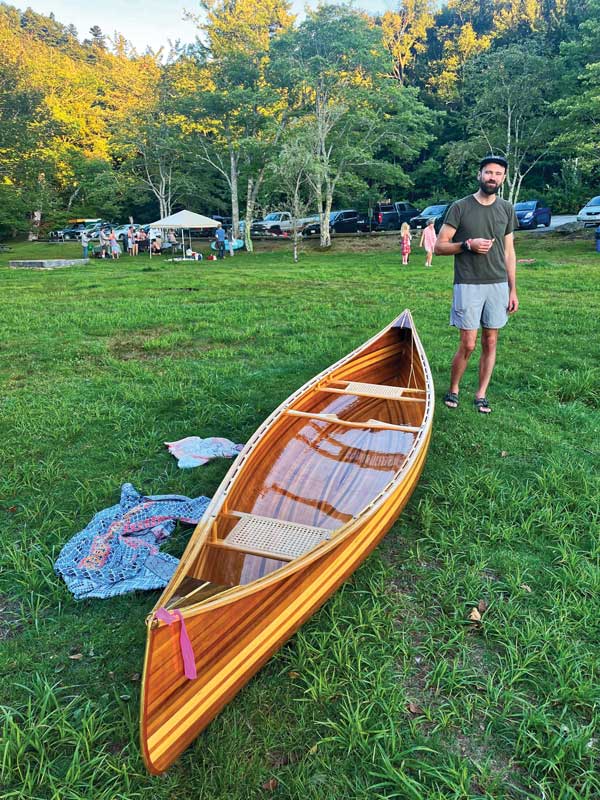 With cane seats and thwarts installed, Aivia is ready to be launched at Megunticook Lake.
With cane seats and thwarts installed, Aivia is ready to be launched at Megunticook Lake.
We paddled the canoe for the first time in August, 2024. A group of friends joined us at Barretts Cove on Lake Megunticook, in Camden, where we grilled burgers and sipped champagne. (We did not break the bottle over the hull of the boat as I wasn’t ready for the damage that might have done.) We christened the canoe Aivia, as an amalgam of our children’s names, and our family pushed off just as the sun began to set. Two years had passed in building the boat, and more than 25 since I’d first begun to dream about it. As the sound of our paddles moving through the water mixed with the cheers from our friends, I began to dream of many years of adventures ahead.
✮
Prospector Ranger 15 Canoe
LOA: 15'
Beam: 2' 11"
Draft: 4"
Displacement: 375 lbs.
Design:
Bear Mountain Boats
Mississauga, Ontario
bearmountainboats.com
Pre-milled strips:
Newfound Woodworks
Bristol, NH
newfound.com
Evan Waters is a native Mainer who returned in 2021, moving to Rockport with his family of four. He has worked in both civil and software engineering. In addition to enjoying building things, he rows competitively with a local club and loves spending time outdoors with his family.
Related Articles
Share this article:
2023 Maine Boat & Home Show

Join Us for the Maine Boat & Home Show!
Art, Artisans, Food, Fun & Boats, Boats, Boats
August 11 - 13, 2023 | On the waterfront, Rockland, Maine
Click here to pre-order your tickets.
Show is produced by Maine Boats, Homes & Harbors magazine.








